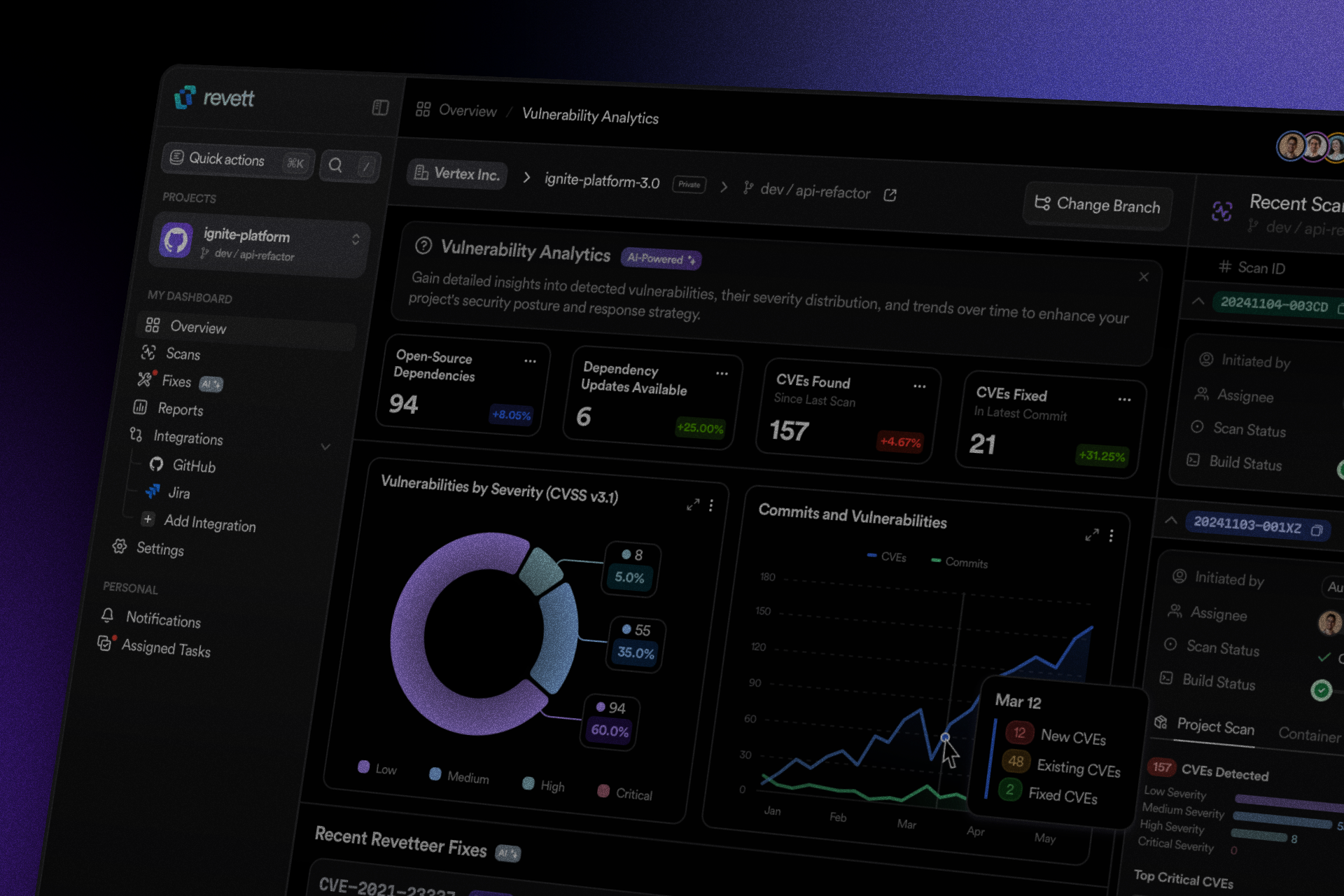Revett
2024


Timeline
November 2024
Overview
Revett is a platform to intelligently monitor, detect, and resolve exploitable vulnerabilities and exposures within a codebase with the help of automated cybersecurity analysis techniques and cutting-edge artificial intelligence.
Technologies
FigmaSketchCybersecurityAI/ML